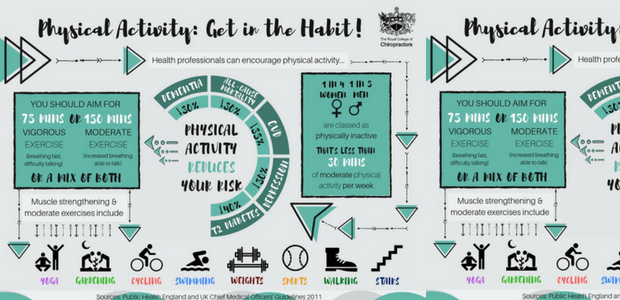The Relationship In Between Stance And Neck And Back Pain: Approaches For Keeping Proper Placement During The Day
The Relationship In Between Stance And Neck And Back Pain: Approaches For Keeping Proper Placement During The Day
Blog Article
Material Written By-Williford Rollins
Preserving correct pose isn't nearly sitting up directly; it's about straightening your body in such a way that sustains your spinal column and lowers the risk of pain in the back. The means you rest, stand, and move throughout the day can dramatically affect your spine wellness. However just how specifically can you guarantee excellent positioning continually, also throughout busy days loaded with various activities? Let's dive deeper into the subtle yet impactful adjustments you can make to your daily routine to keep your back delighted and healthy and balanced.
Relevance of Correct Pose
Appropriate pose is vital in keeping a healthy back and preventing discomfort. When you sit or stand with good pose, your spinal column remains in placement, minimizing pressure on your muscle mass, tendons, and joints. This positioning permits the body to distribute weight uniformly, avoiding too much tension on specific areas that can result in pain and discomfort. By maintaining your spinal column appropriately aligned, you can likewise boost your breathing and digestion, as slouching can press organs and restrict their capability.
In addition, keeping good posture can enhance your overall appearance and self-esteem. When you stand tall with your shoulders back and head held high, you radiate self-confidence and show up more friendly. Great position can additionally make you feel a lot more energized and sharp, as it advertises appropriate blood circulation and enables your muscle mass to work successfully.
Including proper posture into your day-to-day routine, whether sitting at a workdesk, walking, or exercising, is vital for stopping pain in the back and promoting general well-being. Keep in mind, a little change in how you hold yourself can make a considerable distinction in just how you feel and operate throughout the day.
Common Postural Mistakes
When it concerns keeping good position, several people unknowingly make typical errors that can add to pain in the back and discomfort. Among one of the most widespread mistakes is slouching or stooping over while sitting or standing. This placement places too much strain on the back and can bring about muscular tissue discrepancies and discomfort in the future.
One more usual mistake is overarching the lower back, which can flatten the all-natural curve of the back and trigger discomfort. Additionally, crossing visit the next page while resting may feel comfortable, however it can develop an inequality in the hips and hips, bring about postural issues.
Using a pillow that's too soft or also solid while sleeping can additionally affect your placement and contribute to neck and back pain. Last but not least, frequently craning your neck to take a look at displays or adjusting your setting regularly can stress the neck and shoulders. Bearing in mind these common postural blunders can help you preserve much better positioning and reduce the danger of back pain.
Tips for Correcting Placement
To enhance your positioning and minimize pain in the back, it's essential to concentrate on making small modifications throughout your daily routine. Beginning by bearing in mind your position. When resting, ensure your feet are level on the floor, your back is straight, and your shoulders are loosened up. Prevent slouching or leaning to one side. Usage ergonomic chairs or pillows to sustain your lower back.
When standing, distribute your weight equally on both feet, maintain your knees slightly bent, and tuck in your hips. Involve your core muscular tissues to support your back. Take breaks to stretch and walk if you have an inactive work. Integrate workouts that reinforce your core and back muscle mass, such as planks or bridges.
While resting, utilize a cushion that supports the all-natural contour of your neck to keep correct back positioning. Stay why not try this out of sleeping on your stomach, as it can strain your neck and back. By being mindful of these suggestions and making small adjustments, you can progressively correct your positioning and alleviate neck and back pain.
how to get rid of lower back pain
Remember, preserving good stance is essential to preventing back pain and promoting spinal health. By being mindful of your placement, dispersing weight uniformly, and involving your core muscular tissues, you can decrease pressure on your back and reduce the danger of pain and injury. Integrate ergonomic support, take routine breaks to stretch, and enhance your core and back muscle mass to maintain correct positioning throughout the day. Your back will thanks for it!
